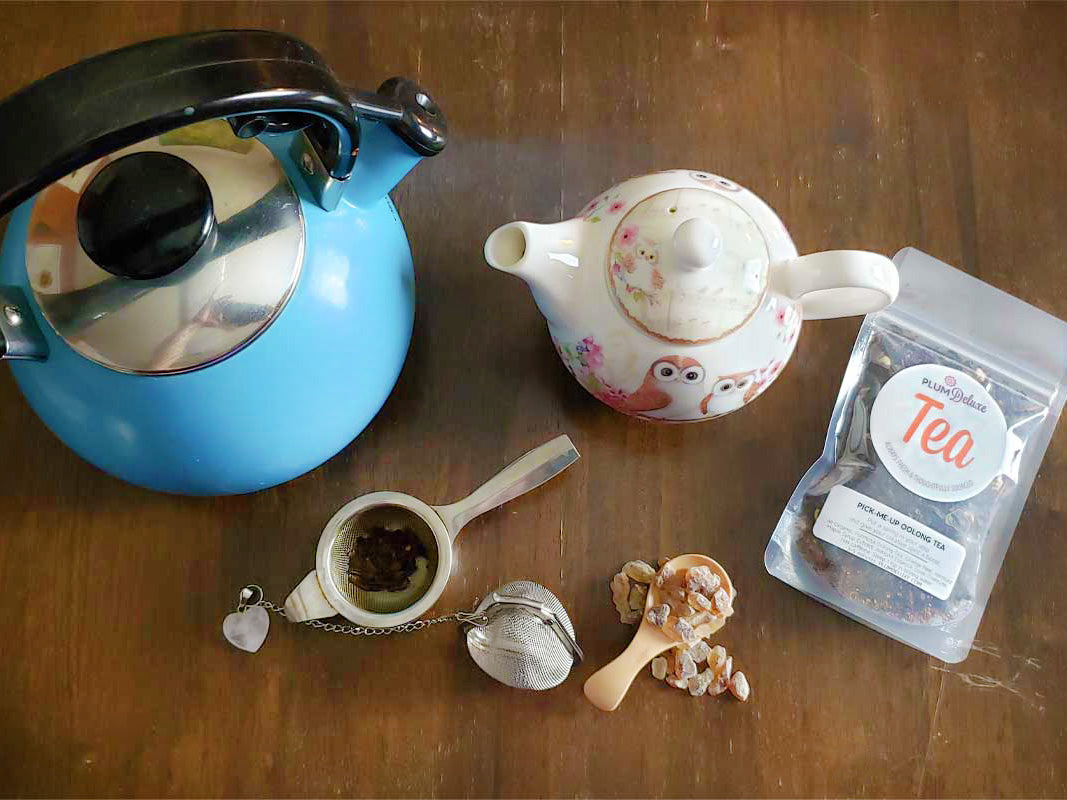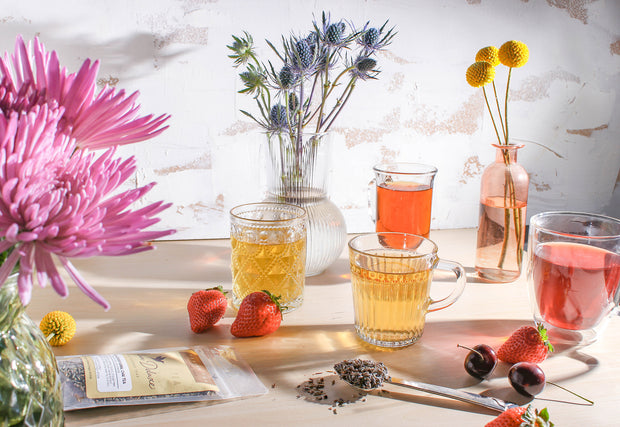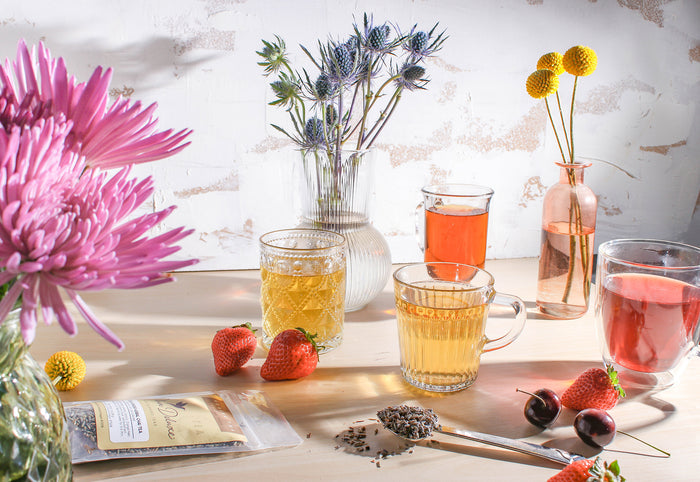There isn’t a problem in the world that can’t be solved over a nice cup of tea.
I get as much enjoyment out of tea preparation as I do drinking it. There’s something relaxing about just going through the motions; stress starts to ease away before I’ve even sat down with my cup of tea.
Today, we’re talking about making tea and how to get the best flavor out of your favorite blend, whether it's a great chamomile tea or tasty sweet tea.
Teaware Recommendations
Presentation is often as important as functionality for many tea drinkers. Here are some recommendations — but these are just a starting point.
Start with something to heat tea in: a traditional kettle, electric kettle, or one of these higher-end kettles that allows for better temperature control and keeps your tea warm. You know, for people that tend to forget about their tea (myself included).
Next, look for a teapot and cup. Tea-for-one sets are great if you’re enjoying tea on your own. There are also some affordable sets that come with a teapot, set of cups, saucers, and a hanging rack.
Making Tea: Choosing a Blend
There’s an appropriate tea for every situation: an energizing oolong or green tea, bold black tea that holds up to the usual cup of coffee, or soothing herbal teas to wind down in the evening before bed. There’s even a blend for light evening work and reading — just enough caffeine to keep you awake for a little longer, but not so much that it keeps you up all night.

Choosing Your Water
Almost as important as the tea itself is water. You might not immediately think of water because of how tasteless it is, but water can have a huge impact on the taste of tea!
I used to use primarily tap or filtered water until I tried this wonderful, floral, earthy/minerally tasting jasmine oolong at our local tearoom. I loved the blend so much that I decided to bring it home with me — only to find it tasted nothing like the tea at the tearoom.
I talked to them the next time I was in and explained that I’d prepared it exactly as they’d described. When asked about what I brewed the tea with, my response something along the lines of, “Well, I don’t remember. Just...water, I guess?”
They left and came back with a tray and four cups, unlabeled, and asked which I liked best. I picked out the second and third ones, which tasted almost the same, like the first time I’d tried the oolong: wonderfully sweet and minerally. The two middle ones were brewed with different spring water, the first with tap water, and the last with distilled water.
The first and last didn’t taste terrible, but they didn’t come close to how I thought the tea should taste after trying it the first time. So, choose your water wisely. Tap water can be great depending on where you live, but you’re often better off with spring water or something to give the tea a little more body. Tap water often makes the tea come out way too bitter, and distilled or purified water just falls flat.
Heat the Water (But Don’t Microwave It)
Most teas can steep for 3-5 minutes, but it largely depends on the kind of tea leaves and how strong you like it. Making tea at the right temperature can be the difference between the perfect cup of tea and one that’s too bitter to drink without copious amounts of sugar and milk. (I mean it; right after I wrote in a blog post that you could never over-steep Earl Grey, I had to make a latte out of a cup that was too bitter to drink.)
Most darker oolongs and black teas can be steeped with water that’s just been boiled. With more delicate green and white teas, remove the water just before it boils while it’s barely simmering. If you accidentally let it get to boil, just let it sit and cool off for about 4-5 minutes.
Whatever you do, just don’t microwave it. Check out this post if you want to know why.

Steeping (and Re-Steeping) Your Tea
First off, you’ll want something to steep your tea in. I still prefer steeping my tea in a pot and pouring it over a strainer, but some people just steep it straight in the cup. (I like some tea getting through, but not that much!)
You can set this cute dragonfly strainers on top of your cup and pour straight from the pot. Strainers are best if you want to completely avoid tea leaves in your cup.
Another method is to use an infuser. You can use infuser “tongs” or tea ball infusers with a chain to steep tea in a cup, much like you would with tea bags. There are also infusers that are similar to strainers but sit in your cup, like this Victorian style “nest” infuser.
If you’ve never used an infuser, you can learn more about infusers here.
Then you’ll want to decide how much tea to use. A general rule of thumb is a teaspoon for each cup and one for the pot. But a lot of other factors can come into play and change how much tea you would use, such as what kind of tea, the size of your cup, and whether you’re having your tea hot or as a cold brew.
Now for the hardest part: steeping your tea for the right amount of time. (Which means not forgetting about it for half an hour while you’re working!) Luckily, tea timers do exist. There are even tea apps that recommend times based on what tea leaf you’re steeping.
If you don’t let it steep too long, tea is often good for two cups. I can sometimes get three steeps in my little tea-for-one set (about 1 teaspoon in 8oz of water, brewed three times). It’s a slightly different flavor each time. Here are some recommendations on tea that re-steeps well.

Making Tea: Finishing Touches
Now for the fun part: putting the finishing touches on your cup of tea. For the most part, flavored teas are wonderful just as they are. There’s often enough flavor that they don’t need any sort of sweetener or cream. But you might occasionally enjoy tea a little more on the sweet side, or you may want to mellow out your chai just a touch.
Your taste will gradually develop and you’ll figure out what unique additions you like, or whether you like any at all! There are many different ways to enjoy tea (some a little less common, like a wonderful tea steamer).
Want some more ideas on what to add to your tea? These add-ins are a great way to give a unique twist to your usual cup of tea.

![Spring Break Tea Variety Pack [6-Pack Variety of Flavors]](http://www.plumdeluxe.com/cdn/shop/files/spring-break-pack.jpg?v=1740682266&width=165)















